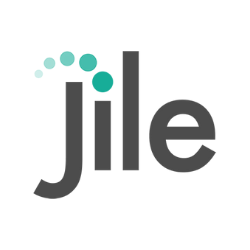An Approach to Agile Portfolio Management

Many organizations leverage Agile portfolio management to plan, organize and prioritize their work. This blog post will discuss the benefits of implementing agile portfolio management, how it can help your organization minimize risk and increase agility, agile portfolio management tools, and finally, what factors to consider to make the most of agile portfolio management..
Agile Portfolio Management Definition
Agile portfolio management is a process of managing and organizing work through an agile lens. It helps to prioritize and plan work in a way that allows for agility and quick reaction times to respond to changes in the market or environment. This can be done by using an agile portfolio management framework such as Scrum Software, Kanban Software, XP (Extreme Programming), DSDM (Dynamic Systems Development Method), or another framework. The goal is to allow your team(s) to react quickly to new opportunities or challenges while still maintaining focus on the most important work.
There are many benefits of using an agile approach for portfolio planning, with the most prominent ones being - Increased Agility, Improved Communication, and Better Prioritization.
- One of the primary goals of Agile portfolio management is increased agility - being able to quickly adjust to changes in the environment or market.
- Since most Agile portfolio management processes rely on collaboration and communication within a team, this approach can improve intra-team communication as well as between teams.
- With an Agile PPM, it is easier than ever to prioritize work based on value, risk, dependencies, and more - allowing your organization to focus on what matters most at any given time.
Principles of Agile Portfolio Management
In order to ensure your Agile portfolio management process is successful, there are several principles that should be taken into account. These principles should be tailored to your specific company or organization but will include things like:
- A focus on the 'why', not just the 'what'
- Continuously validate and inspect (Kanban)
- Collaboration is the key
The following are the key principles to keep in mind during Agile portfolio planning:
-
Keep Things Simple and Streamlined:
One of the goals of Agile portfolio management is to keep things simple and streamlined. This means having a process that can be easily adapted and adjusted as needed. The goal is not to have a complex and rigid process but rather one that allows for flexibility and quick reaction times. That's why organizations use a wide range of Agile portfolio management tools that can make the process more efficient. When it comes to keeping things streamlined, less is more. That is, avoid having too many processes and tools that can get in the way of agility.
-
Concentrate on Value Instead of Cost:
Costs are easy to measure, but the value is what will ultimately determine the success of your project. One way to think about this in terms of Agile portfolio management is that you should always be asking yourself, 'what's most important'. By focusing on priorities and only doing things that matter (i.e., those that provide more value than cost), can help organizations itemize their work based on business needs rather than just the number of hours spent working. When it comes down to it, time is money - so make sure you're spending yours efficiently!
-
Minimize Cost of Delay (CoD):
Cost of Delay (CoD) is a metric that helps to identify and understand the value of completing tasks sooner rather than later. To calculate CoD, you take the benefit of completing a task (e.g., increased revenue, saved time, etc.) and subtract the cost of delaying it (e.g., lost opportunity costs, increased expenses, etc.). This will give you an estimate of how much money or other benefits are gained by completing a task earlier rather than later. When making decisions about what work to do next, it's important to consider the CoD as well. In other words, ask yourself if it is worth delaying another task in order to complete this? By taking into account the CoD for each individual task, you can prioritize work much more efficiently.
-
Opt for Stable Teams Instead of Project Teams:
Project teams are temporary, whereas stable teams are more permanent. The idea behind Agile portfolio management is to focus on creating lasting change (and value) through projects that can be repeated and built upon over time. This means moving away from the concept of project-based work in favor of sustainable team structures or habits where you continually improve your processes/products based on customer feedback.
-
Allow for Diversity:
A big part of Agile portfolio planning is embracing change, and this includes the type of work being done. One way to do this is by allowing for a diversity of work within your organization. This could mean having different teams working on different projects simultaneously or allowing for changes in project direction as new information arises. The goal is to have a flexible process that can adapt to any situation, which means not getting stuck in the mindset of 'this is how we've always done things around here'.
By following these principles, you'll be able to create an efficient Agile portfolio management process that focuses on what's important and delivers value to your customers. You can take the help of various Agile portfolio management software that are available in the market to manage your projects.
Factors to Consider in Agile Portfolio Management
1. Determine Prospective Value
When it comes to Agile portfolio management, the value of a project or task is not always clear. In other words, you want to be sure that what you're doing will have a lasting impact and drive business results rather than just being busy for the sake of being busy. This can be determined by looking at a variety of factors, including:
- Value stream mapping
- Cost-benefit analysis
- Return on investment (ROI) calculations
These tools combined with customer feedback from each stage should give teams an idea about which projects are going to deliver more value in terms of revenue generation. This can also help them cut back on wasted effort/time through redundant features or work that's simply unnecessary unless market demand changes dramatically.
2. Search Possible Endeavors
The best Agile portfolio management approach is one that looks at all possible opportunities instead of focusing on a singular project or task. This means doing things like picking the low-hanging fruit, brainstorming ideas for new projects, and having regular check-ins to make sure you're staying top of mind when it comes to potential business needs. The more diverse your work within an organization becomes (e.g. team members are working across multiple initiatives), the less likely they'll be able to rely on their individual memory about what's going on in other groups/departments - which can lead to miscommunications around requirements if everyone isn't updated with current statuses.
3. Prioritize Possible Endeavors
Once you have a good list of potential endeavors, it's time to start prioritizing them. This can be done in a variety of ways but often includes looking at things like:
- Value proposition
- Risks associated with the endeavor
- Potential benefits/costs
- Timeline for completion
This will help teams figure out which projects they should be focusing on now and which ones can wait until later. It's important to note that this is not a set-in-stone process, as things may change along the way - but it provides a solid starting point for making decisions about where to allocate resources.
4. Commence Endeavors
After you've decided which projects are worth pursuing, it's time to get started. This is where the creation of your Agile portfolio management plan comes into play and will help keep everyone on track while keeping an eye toward meeting milestones along the way. You are advised to use Agile portfolio management tools and other key principles to help you monitor your initiatives and ensure they're still relevant as time goes on.
5. Fund Projects
The most important step in the Agile portfolio management process is to move forward with funding projects. This can be done by looking at things like:
- ROI
- Risk assessment (including market fluctuations)
- Timeline for completion
This will help you determine how much money should be set aside for each project and ensure that teams are able to complete them within the allotted time frame.
6. Plan IT Capacities
Finally, it's time to think about your IT capacity and how it will be distributed across initiatives. This includes things like:
- Estimating work hours for different projects
- Creating a task board that can easily be accessed by all team members
- Creating the right balance of resources (e.g., number of developers per project)
- Having access to the necessary IT infrastructure and tools
This will help you avoid any bottlenecks down the line and ensure that everyone has what they need to be productive.
Summary
There is no one-size-fits-all answer when it comes to Agile portfolio management but following these general tips with agile planning tool should give teams a good starting point for creating their own approach. By taking a holistic view of business needs, staying flexible, and being proactive in terms of allocation decisions, organizations can increase their chances of success while still maintaining a focus on delivering value to customers. In today's fast-paced business environment, this is more important than ever before. Request a demo now!
Thanks for subscribing to our latest blogs, thought leadership and other product updates!
Read our Privacy Notice to know more. You can opt-out of all communications anytime.
